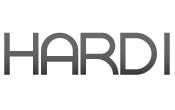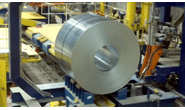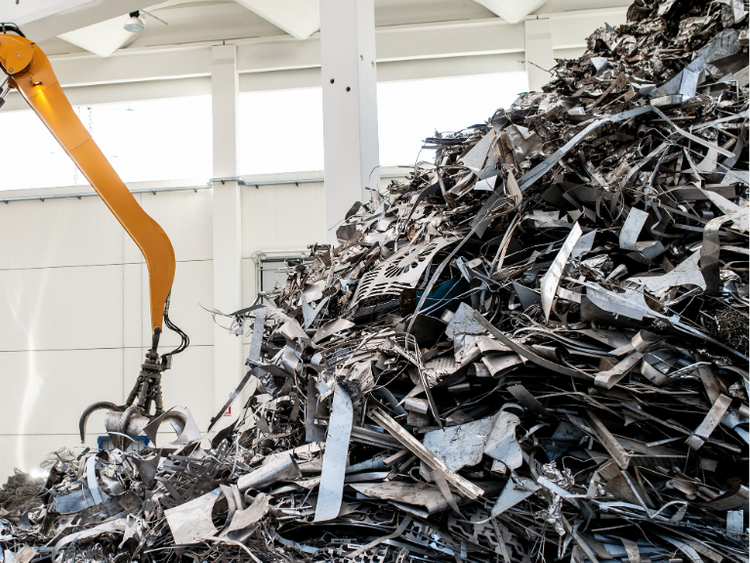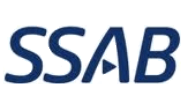Steel Mills

HARDI: Mill Behavior’s Confusing
Written by Tim Triplett
August 22, 2017
How can domestic mills expect to increase prices when their lead times are so short and foreign steel is still so plentiful? In the monthly steel conference call hosted today by the Heating, Air-conditioning, and Refrigeration Distributors International, HARDI members commented on the contradictions in mill behavior that have left them confused and concerned about the second half of the year.
During last month’s conference call, the wholesalers and distributors who sell galvanized steel products to the HVAC market described themselves as stuck in an uncomfortable wait-and-see mode as the Section 232 drama played out in Washington. A full month later, there is still no resolution to Section 232, and the threat of possible trade action in the coming weeks or months is still a source of anxiety.
![]() Since the last call, U.S. mills have announced flat rolled price increases of $30 per ton. HARDI members are skeptical the higher price will stick because there are so many factors working against it.
Since the last call, U.S. mills have announced flat rolled price increases of $30 per ton. HARDI members are skeptical the higher price will stick because there are so many factors working against it.
For one, imports remain strong. For four straight months, galvanized imports have exceeded 300,000 tons. “Historically, that’s still a high number, despite the trade cases and the ongoing threat of 232,” said one member. For another, lead times are short. “If you can get galvanized steel in less than four weeks, something must give [before prices could rise],” said one member. “I placed an order with one mill that offered a better price if we would buy more tonnage. If you read between the lines, the mills don’t do that when they are in a position of strength,” commented another executive.
The belief that a Section 232 ruling was imminent prompted a lot of buyers to place orders for foreign steel in the spring ahead of any possible duties, which caused a surge of imports. But the overabundance of foreign in the market is likely to be short-lived. One HARDI member predicted imports could plunge in September and October by as much as 50 percent from the levels in June and July. The market was flooded in the spring with orders from businesses that rely on material from offshore, especially ultra-light-gauge products that aren’t widely available in the U.S., he noted. “A lot of them are carrying massive inventories right now because they had to make those moves. But they were not buying foreign steel in April, May and June, [which would arrive this fall].”
Inventory levels were tight earlier in the year, but have eased due to the influx of foreign material. A few HARDI members even acknowledged their inventory levels are a bit high. The latest months on hand figure from the Metals Service Center Institute is 2.3 months, up from a tight 1.9 months in MSCI’s last report. “Most believe service center inventories are pretty well balanced and that this latest price increase might have a tough time sticking,” added a wholesaler from the South.
The mills no doubt hope to recover some of their rising raw material costs, notably scrap. In addition, the cost of zinc has hit a 10-year high of more than $1.40 per pound and may prompt an increase in mill extras on galvanized. “If coating extras do move, that equates to a price increase for everybody on this phone call. We have to keep our eyes on what’s happening with zinc,” said a service center exec from the Midwest.
HARDI members all reported relatively healthy demand from their customers. Consumers of galvanized steel, including HVAC, construction, appliance and other manufacturers, continue to buy. “All these markets seem to be very positive or at least recovering. Even the energy, ag and heavy equipment guys are saying things are improving. Overall demand does not seem that bad,” said one service center.
Demand is not necessarily spread evenly. One Midwest wholesaler noted that his steel volume has recovered in the past three months after declining in the first five months, though he is still down for the year. “I have noticed an absence of large orders. Most contractor customers are buying for one job, but not two or three. They are more hand to mouth as far as purchases,” he said.
Competition from service centers and other nontraditional suppliers that have moved into the HVAC sector continues to squeeze margins, said a few members.
At least for the time being, foreign offers continue to come in as Section 232 “smolders” on the back burner, observed one West Coast wholesaler. The mills can point to rising scrap and zinc prices to justify their recent increases. But the next 60-90 days should be telling. It all depends on import levels and demand this fall. If demand stays steady and imports decline sharply as expected, inventories could get depleted, putting upward pressure on steel prices. The mills could get their price increase, just not as soon as they had hoped.
Steel Market Update participates in a monthly steel conference call hosted by HARDI. The call is dedicated to a better understanding of the galvanized steel market. The participants are HARDI member companies who are wholesalers, service centers and manufacturing companies that either buy or sell galvanized sheet products used in the HVAC industry.

Tim Triplett
Read more from Tim TriplettLatest in Steel Mills

Nucor profits jump in Q3, but company cautions on Q4 outlook sequentially
Nucor’s profits more than doubled in the third quarter year over year, but the company expects Q4’25 to be lower sequentially.

SDI announces proprietary low-carbon EDGE products
Steel Dynamics has announced lower-embodied-carbon steel products BIOEDGE and EDGE, and expects “immediate interest” from several markets for some of the offerings.

Wheeling-Nippon Steel raises Galvalume coating extras
The steelmaker released updated extras to customers on Oct. 15, marking the second adjustment in just six weeks following their early September revision

Cliffs offloading some FPT assets, considering HBI plant sale as well
Lourenco Goncalves confirmed that Cleveland-Cliffs is actively selling off portions of its Ferrous Processing and Trading (FPT) assets. Its direct reduction plant in Toledo, Ohio, may also be up for grabs...

SSAB cites US strength but flags tariff-driven uncertainty
The Americas segment of Swedish steelmaker SSAB delivered a stable third quarter, but with weaker shipments and continuing cautious demand. Plate prices held, but tariffs, slowing end-user demand, and...
